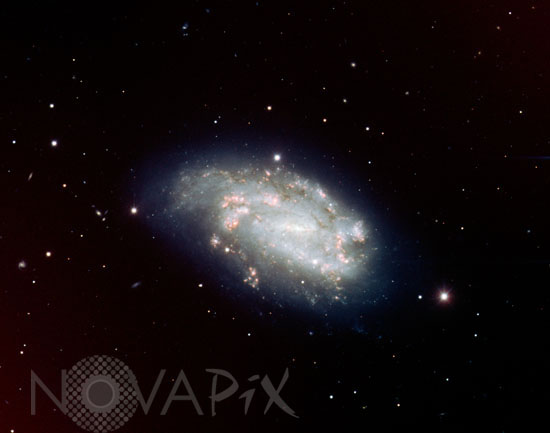Photo Agency - Astronomy - Space - Nature

Barred spiral galaxy NGC 1559 with a supernova
author: ESO/Novapix
reference: a-gax15-59001
Image Size 300 DPI: 17 * 13 cm
On the night of August 4, 2005, an amateur astronomer and supernovae discoverer Reverend Robert Evans discovered a supernova just North of this galaxy. This supernova is classified as a somewhat unusual type Ia supernova, caught probably 10 days before it reached its maximum brightness. Such a supernova is thought to be the result of the explosion of a small and dense star - a white dwarf - inside a binary system. As its companion was continuously spilling matter onto the white dwarf, the white dwarf reached a critical mass, leading to a fatal instability. NGC 1559 is a SBc(s)-type spiral galaxy located about 50 million light-years away, that weighs the equivalent of about 10,000 million of suns, and is about 7 times smaller than our Milky Way. Receding from us at a speed of about 1,300 km/s, it is a galaxy of the Seyfert type. Such galaxies are characterized by a bright nucleus that radiates strongly in the blue and in the ultraviolet. Astronomers think that about 2 solar masses of gas per year are transformed into stars in this galaxy. Like most galaxies, NGC 1559 probably contains a black hole in its centre, which should have a mass that is equivalent to 300,000 suns. Colour composite image obtained with the multi-mode FORS1 instrument on ESO's 8.2m VLT. The supernova, SN 2005df, is visible as the bright star just above the galaxy.
Contact : Stéphane Aubin +33-(0)9-51-26-53-76
© Novapix - All rights reserved


